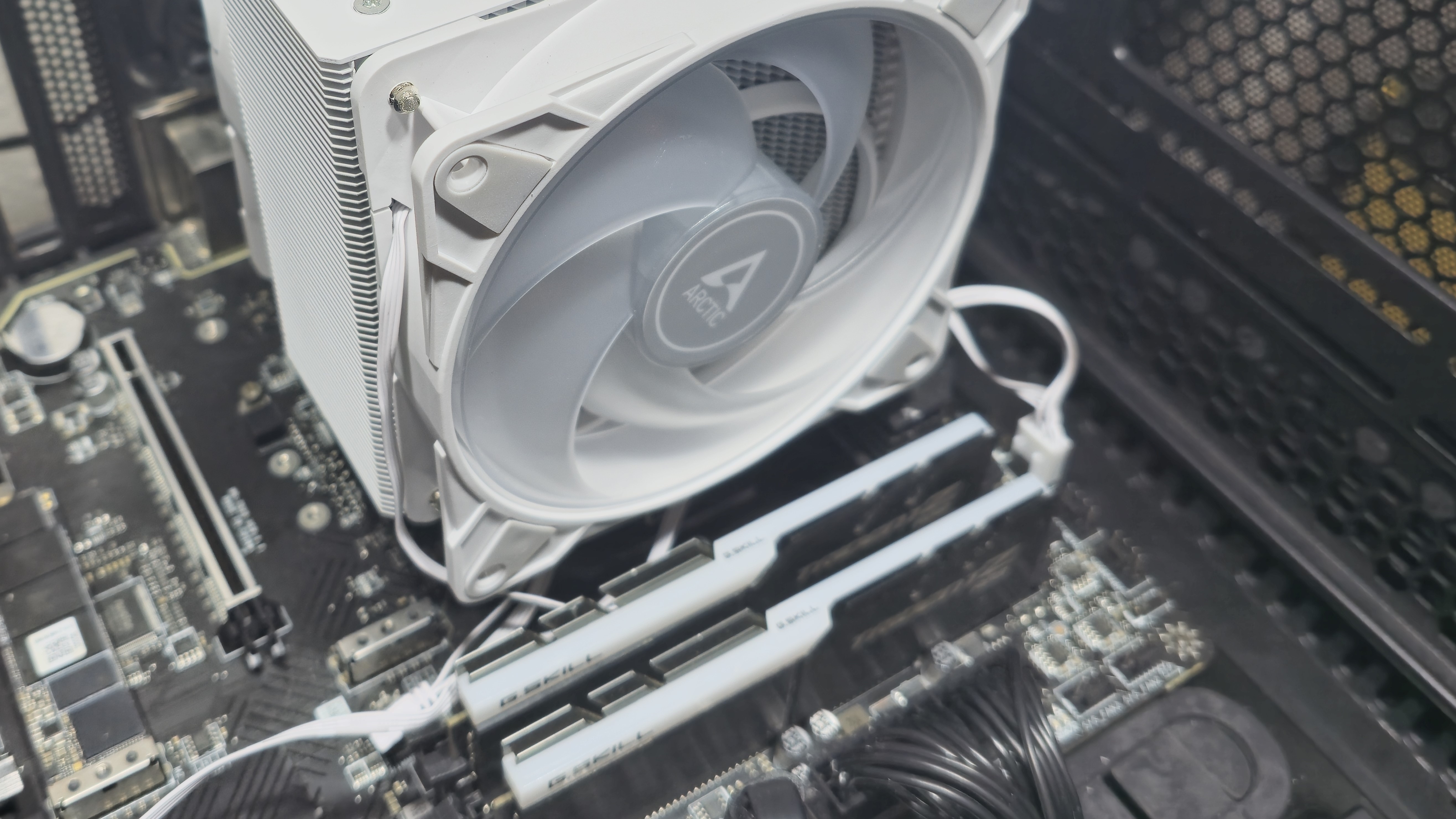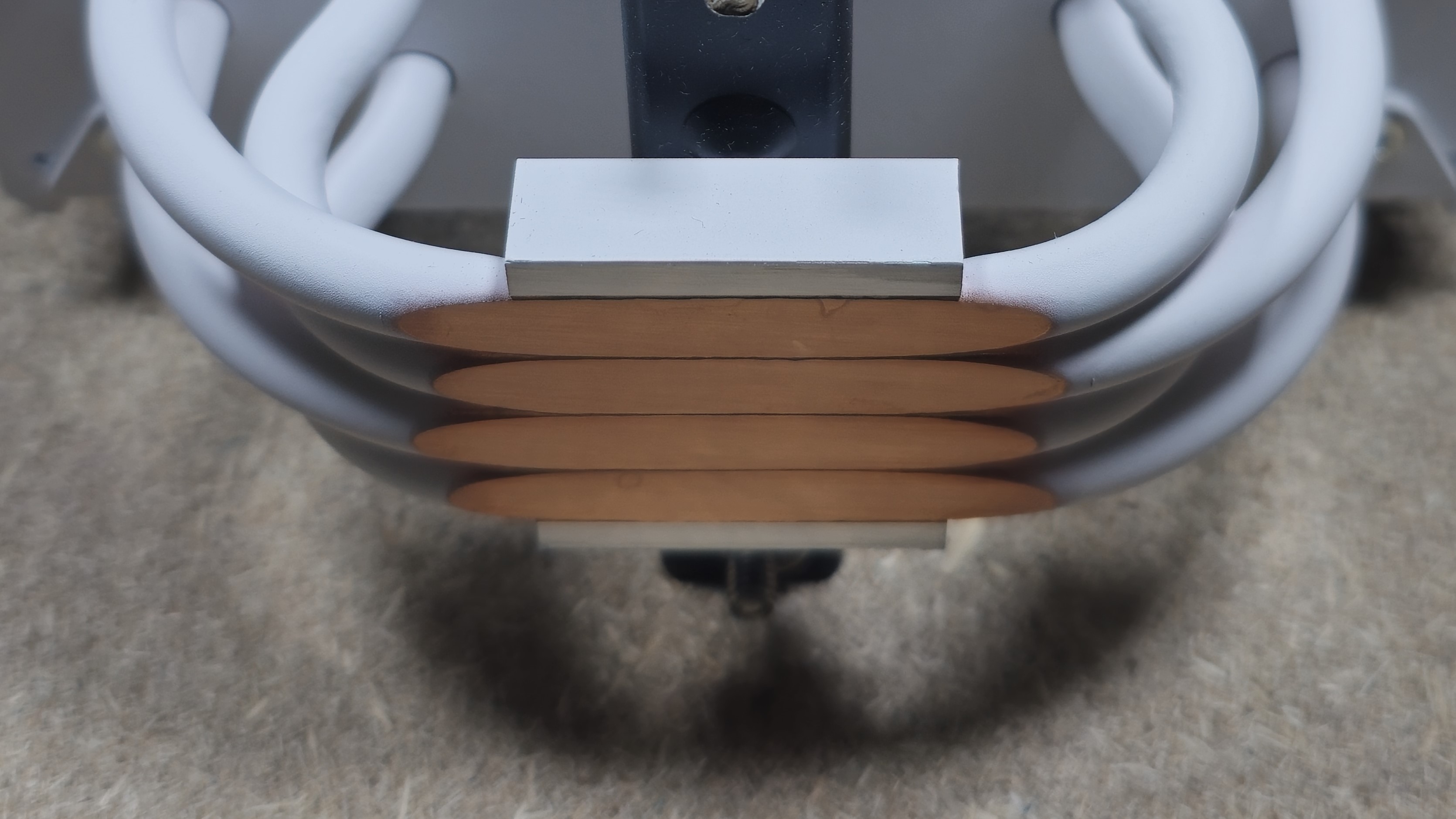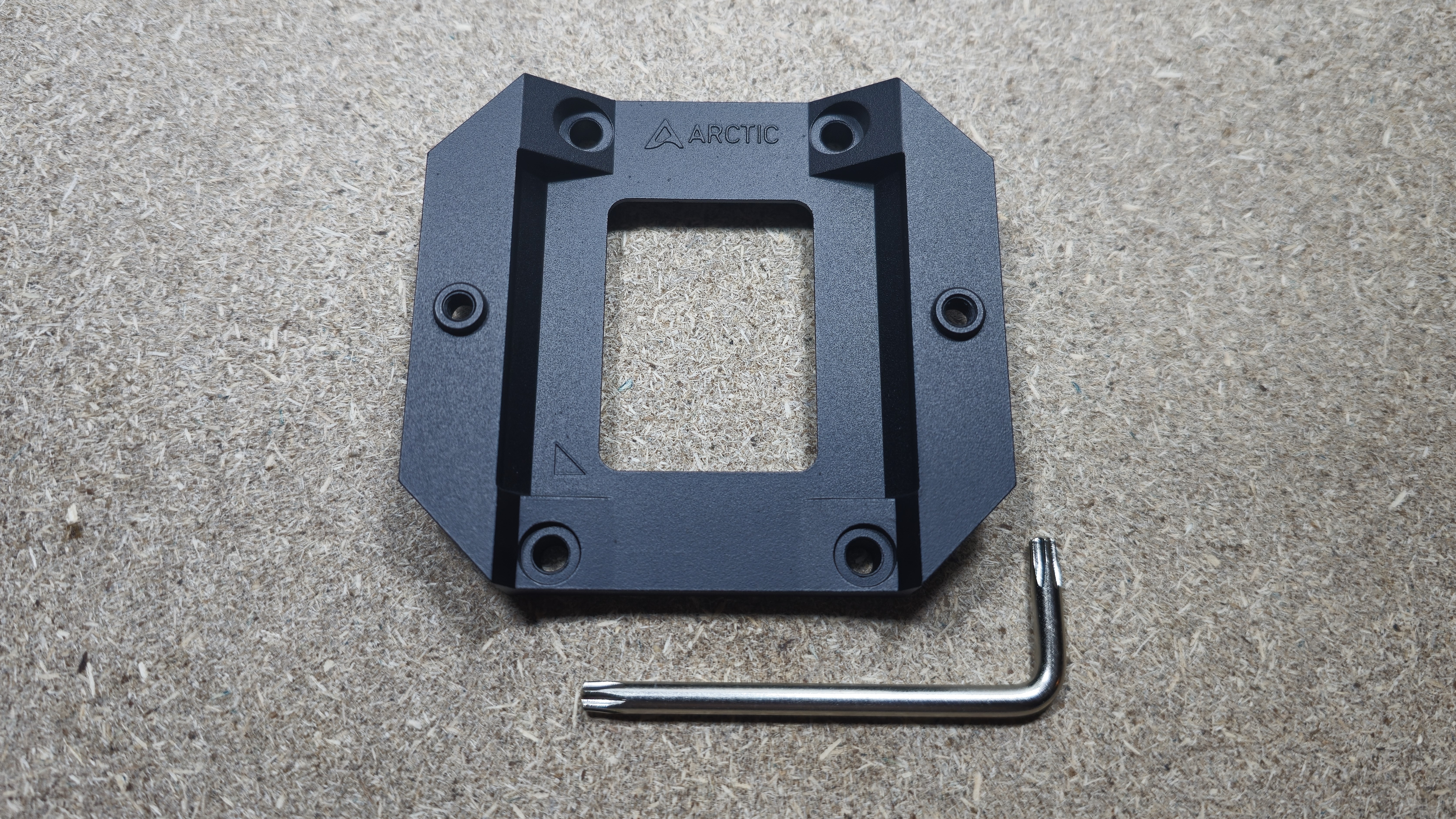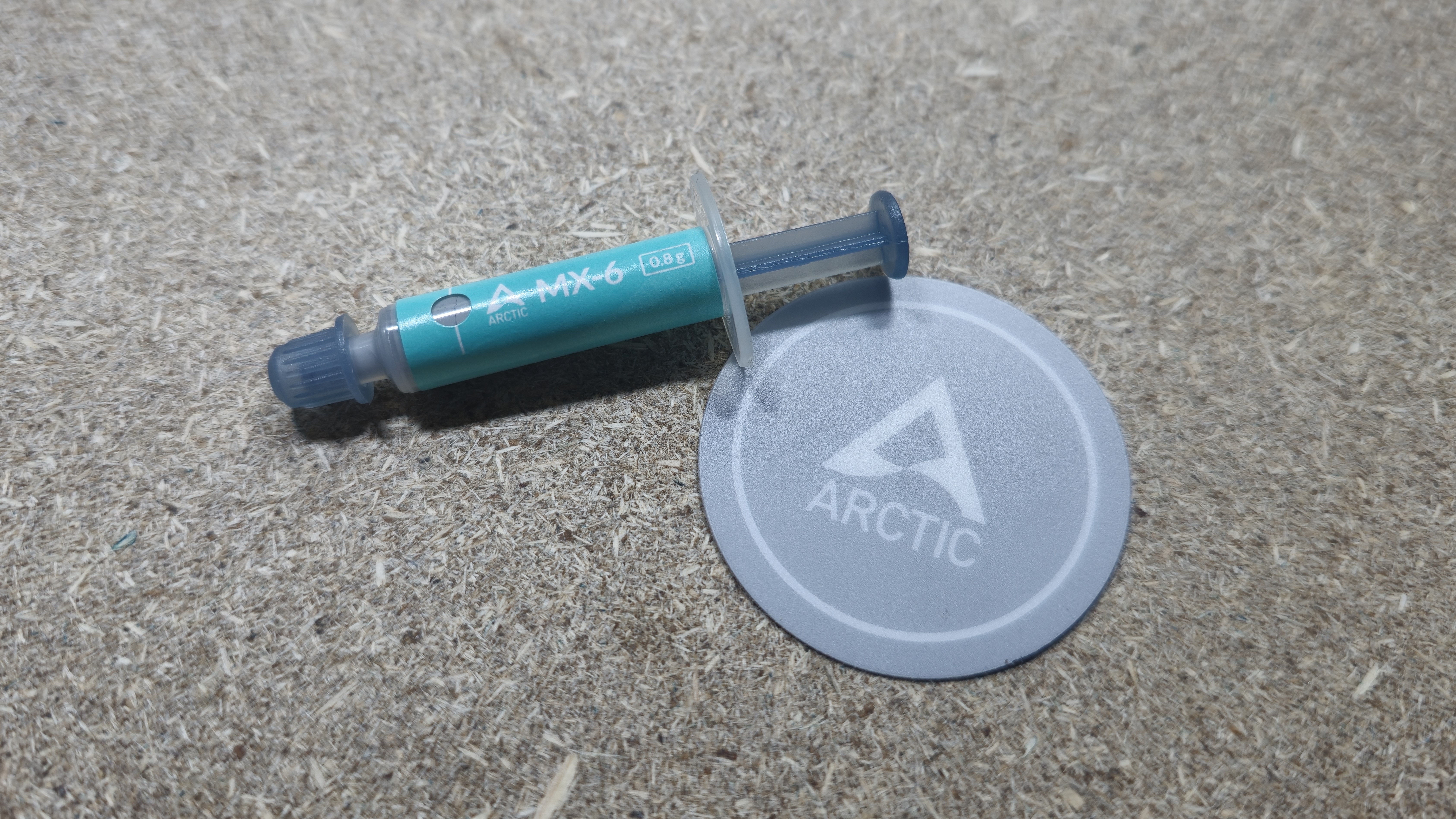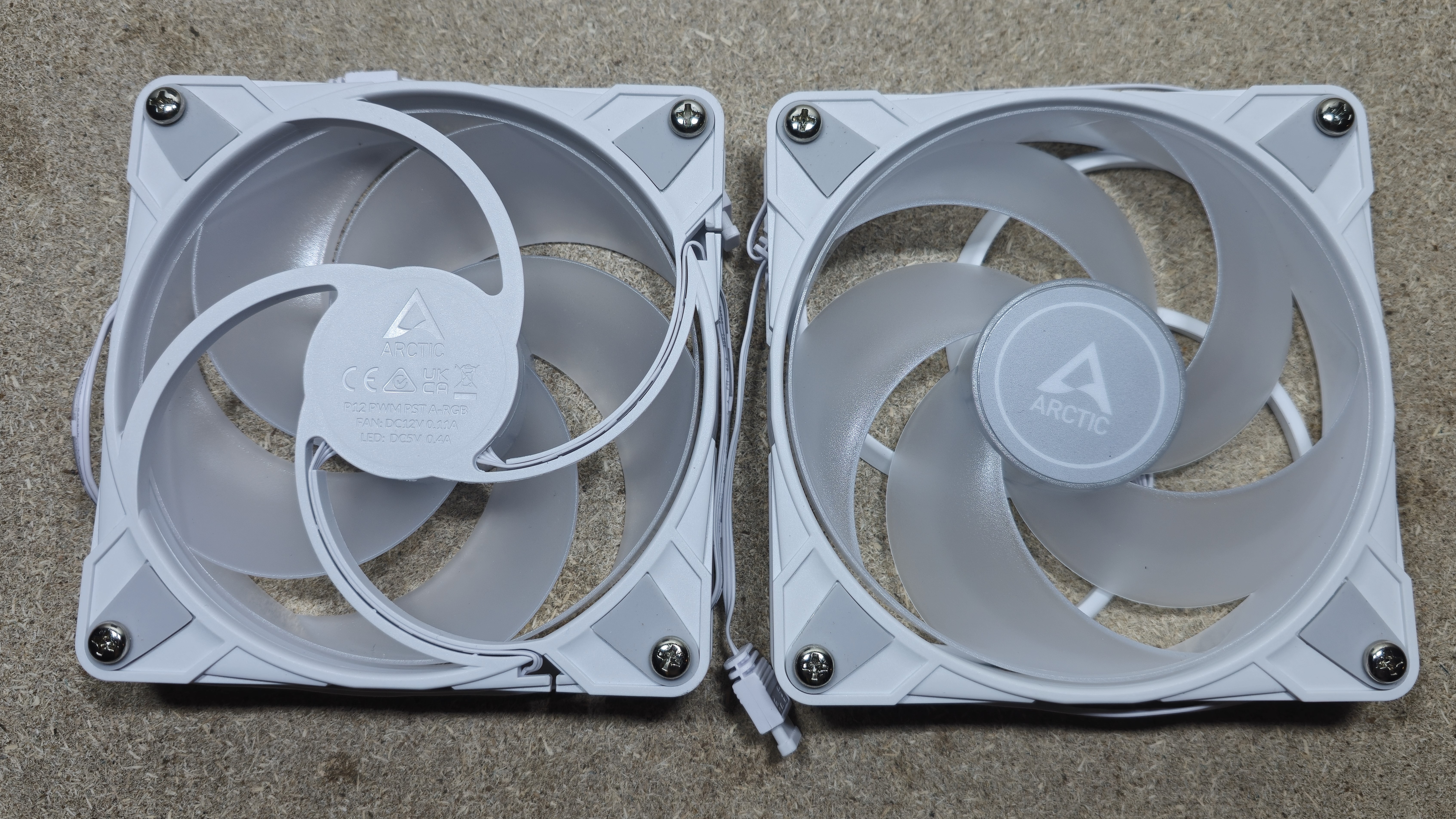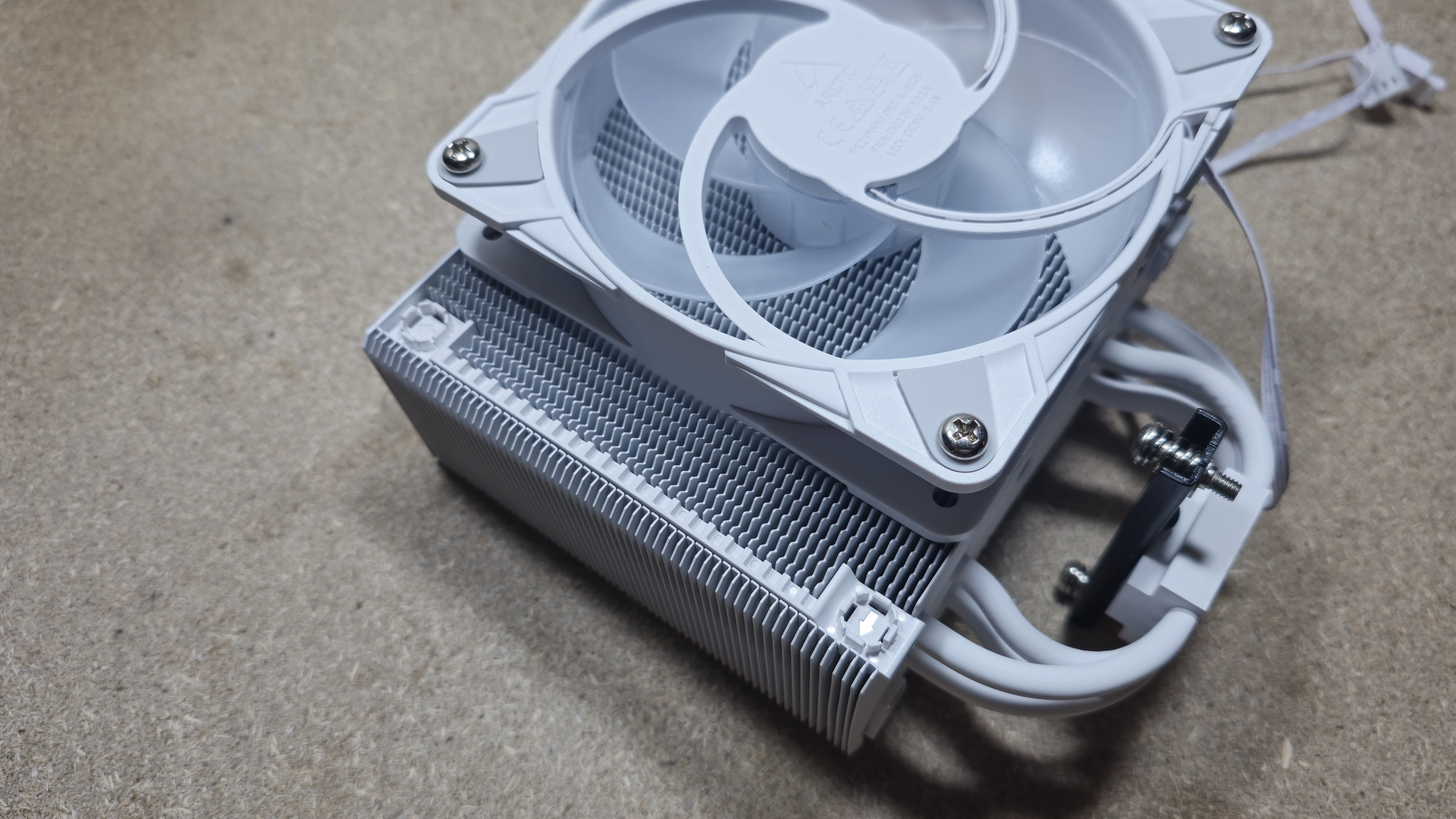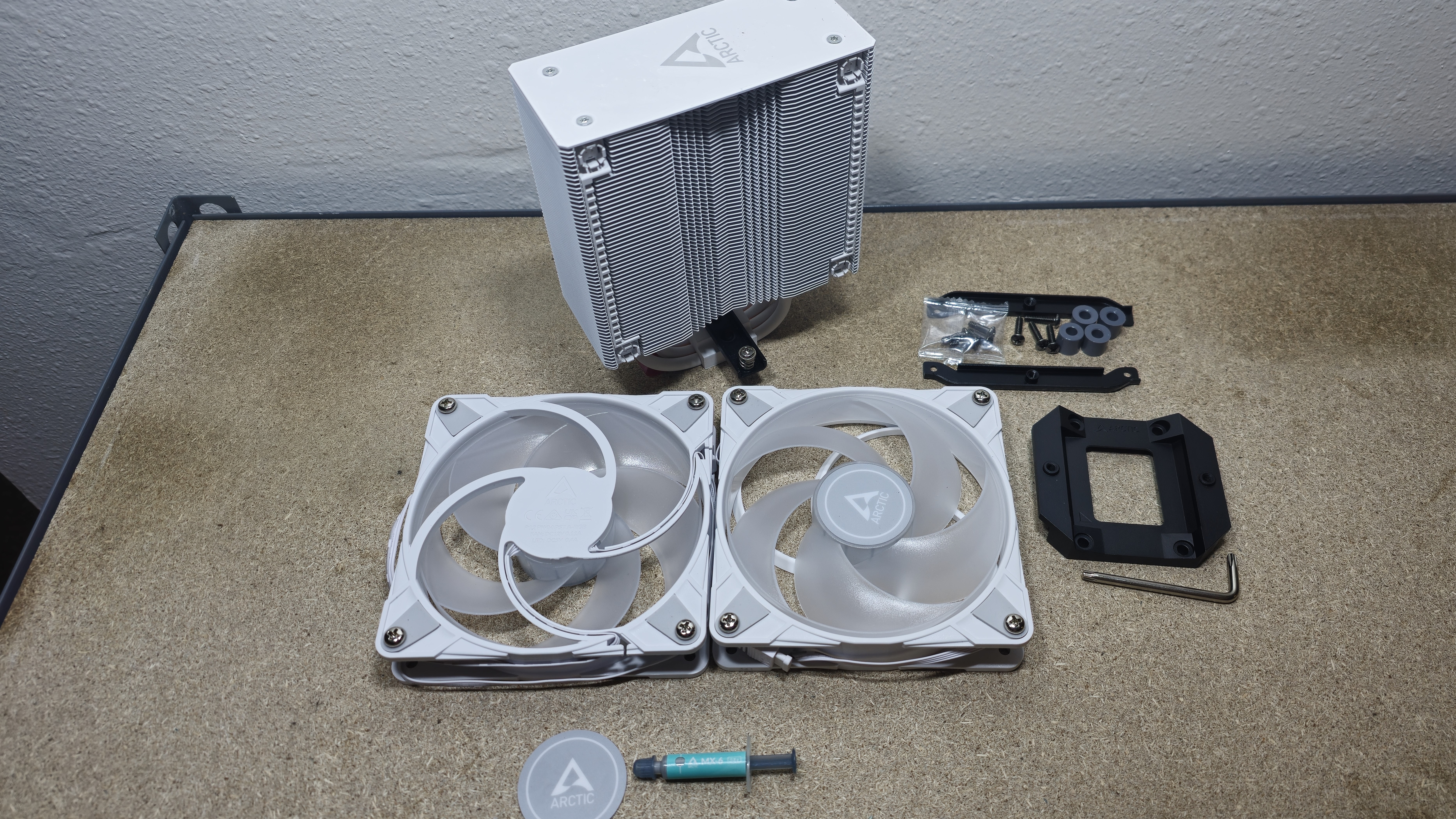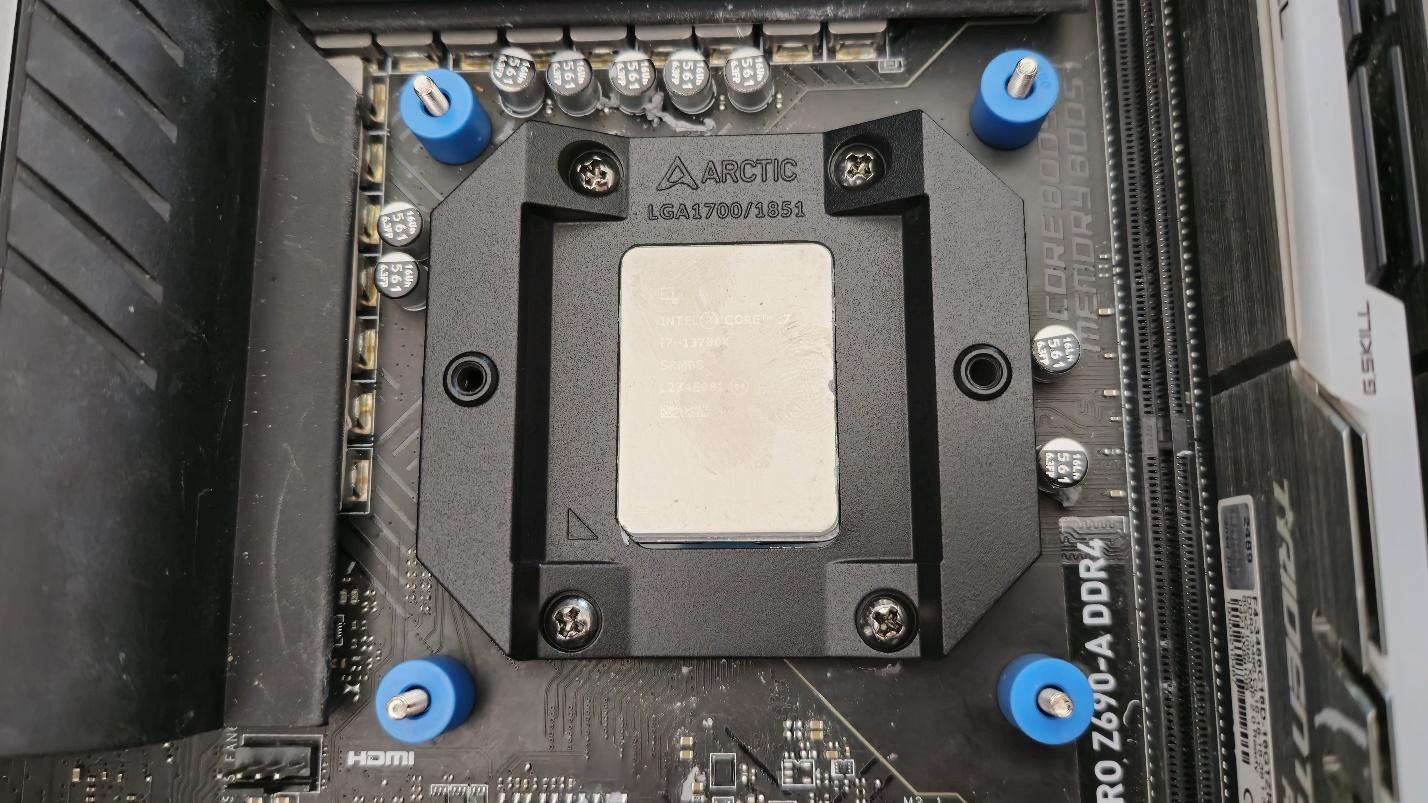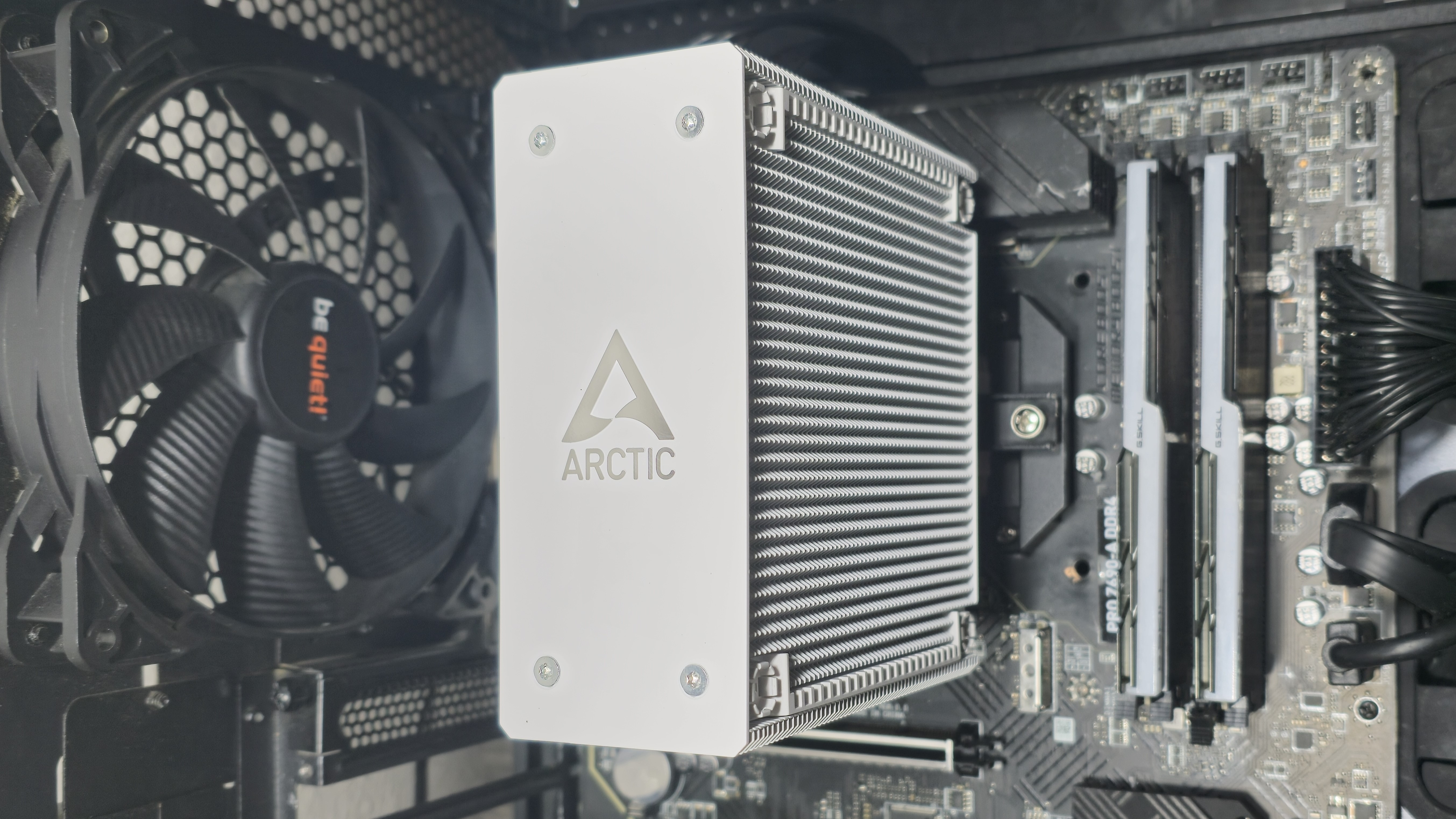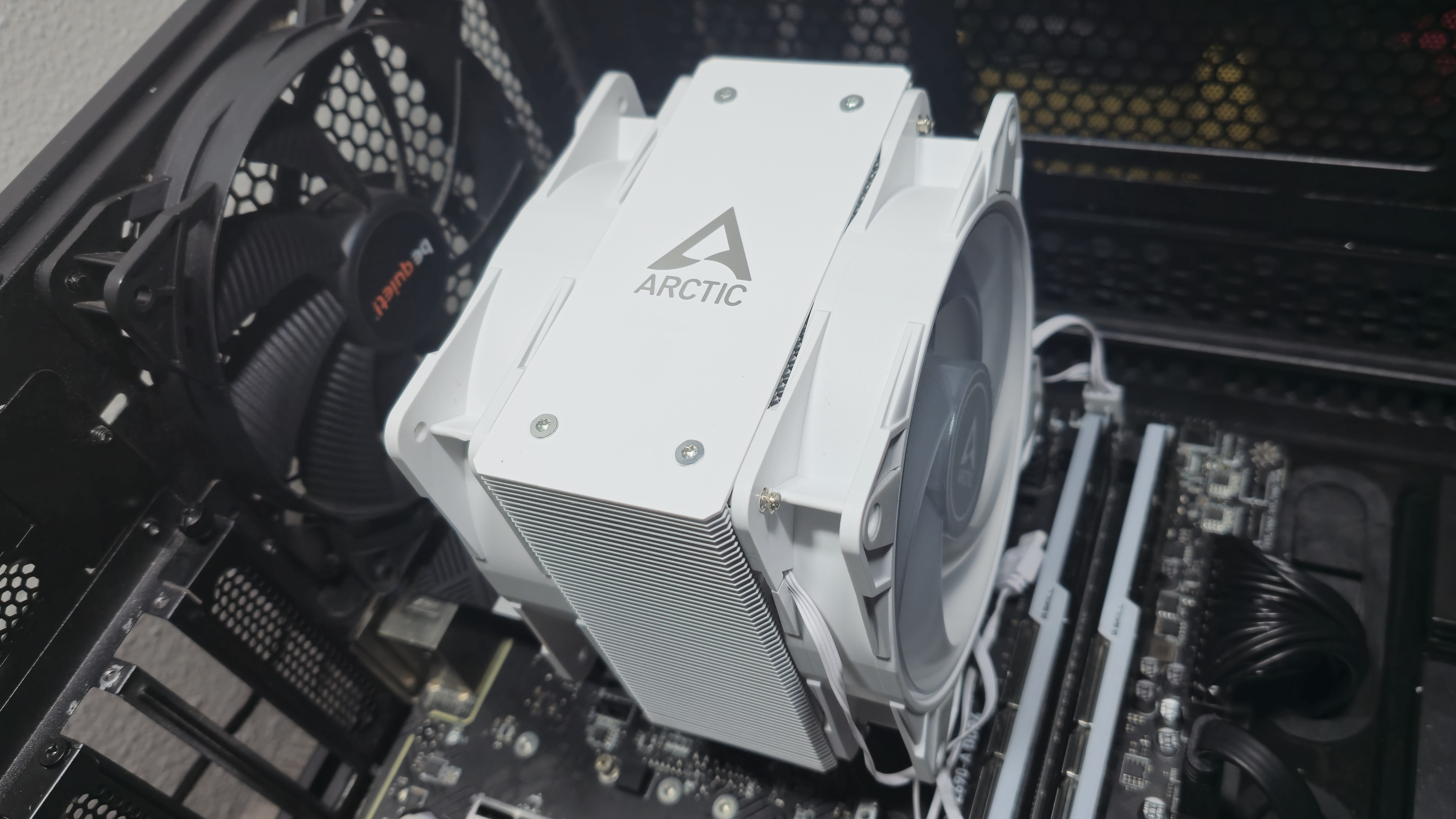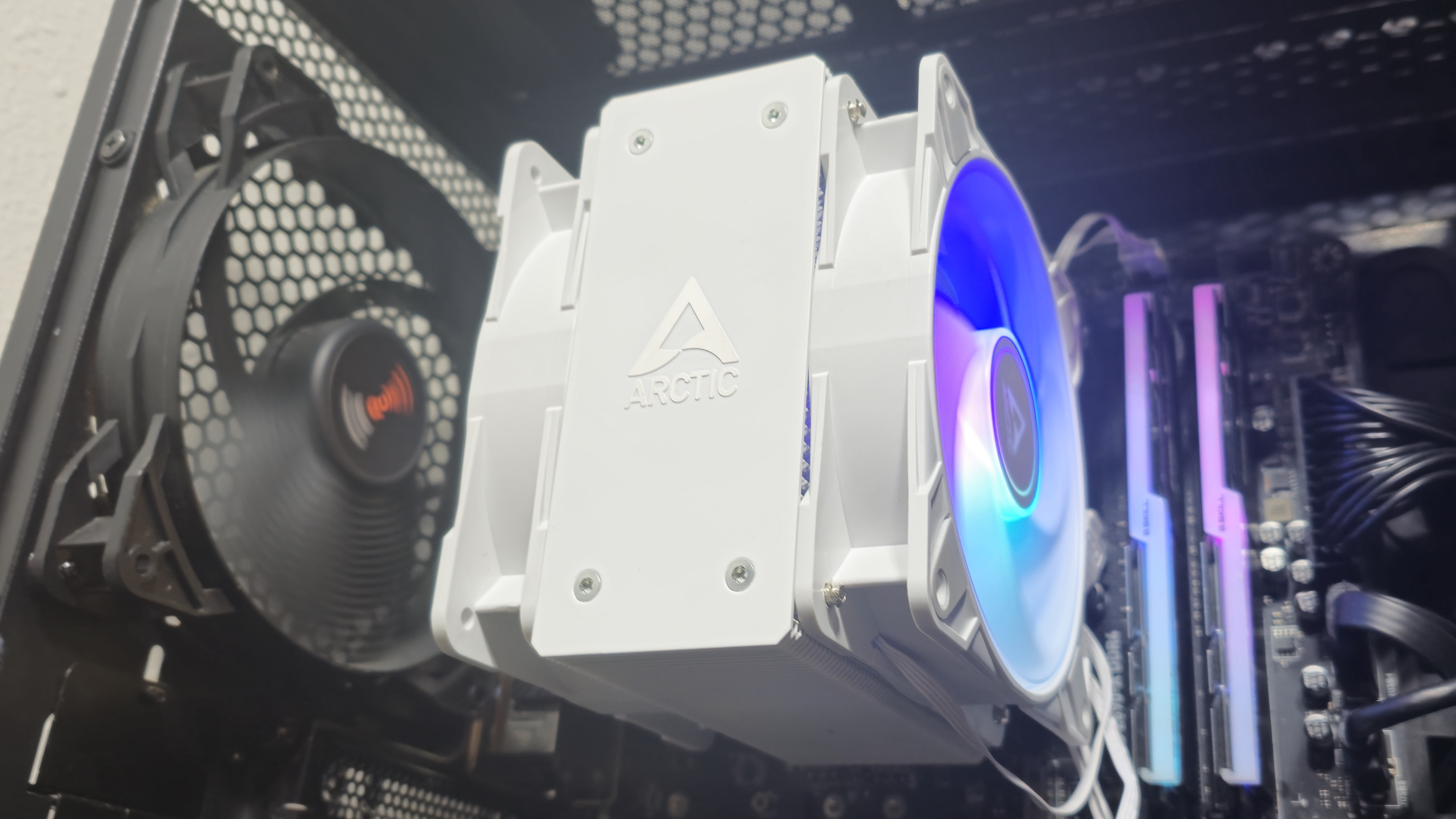Tom's Hardware Verdict
Arctic Freezer 36 entry-level air cooling with excellent noise levels and a reasonable price, starting below $30.
Pros
- +
Low noise levels
- +
Tool-free fan installation
- +
Maintains boost speeds for longer than competing coolers
- +
Good noise-normalized performance for its class
- +
Low price
Cons
- -
Forced use of a warranty-voiding contact frame
- -
Only supports LGA 1700 and AM4/AM5
Why you can trust Tom's Hardware
German company Arctic has been a mainstay in the PC cooling space ever since its founding in 2001. Today the company is known for its Freezer Air & Liquid CPU Coolers, MX thermal pastes, fans, as well as custom Accelero GPU coolers.
Most of our cooling reviews cover higher-end products, but today we’ll look at Arctic’s latest budget air cooler, the Freezer 36 White ARGB. Does this cooler have what it takes to earn a spot on our best Coolers list? We’ll put it through testing and find out. But first, here are the cooler’s specifications, direct from Arctic.
Cooler specifications
| Cooler | Freezer 36 A-RGB White |
| MSRP | $33.87 |
| Heatsink Material | Aluminum |
| Rated Lifespan | 6-year warranty |
| Socket Compatibility | Intel LGA 1700/1851 AMD AM5/AM4 |
| Base | Copper Base |
| Max TDP with Intel’s i7-13700K (Our Testing) | 219W |
| Dimensions | 104mm (L) x 126 mm (W) x 159mm (D) |
Features of Arctic’s Freezer 36 Air Cooler
▶ Available in black or white, with or without RGB
Arctic recognizes that PC users have a diverse set of aesthetic tastes. As such, the Freezer 36 is available in black and white and with or without ARGB.
Image Source: Arctic Cooling
▶ Full RAM Compatibility
Arctic’s Freezer 36 does not impede or overhang DIMM slots in any manner – allowing installation of all sizes of DDR4 and DDR5 RAM, no matter how tall.
Get Tom's Hardware's best news and in-depth reviews, straight to your inbox.
▶ Industry-leading 6-year warranty
Many manufacturers offer just two- or three-year warranties for their products. Arctic indicates confidence in its manufacturing quality by backing its cooler with an industry-leading six-year warranty.
▶ Direct touch heatpipes
If you pair an air cooler with a hot CPU like Intel’s i7-13700K, most will almost immediately hit TJ Max (the CPU’s maximum temperature) and throttle to a small extent. Arctic’s use of direct touch heatpipes prevents this from happening – the cooler is able to handle the full maximum turbo speeds of Intel’s i7-13700K for a short period of time, allowing unrestricted performance when it’s needed.
▶ LGA 1700 contact frame
To ensure the best possible performance on Intel systems, Arctic includes a LGA 1700 contact frame with the Freezer 36.
▶ Arctic MX-6 Thermal Paste, Arctic Sticker
A small 0.8g tube of Arctic MX-6 thermal paste is included, which is sufficient for a few installations. Arctic also includes a sticker, for those who like to display their brand loyalty.
▶ Arctic P12 PWM PST A-RGB 120mm fans
One of the most important aspects of a cooler are the fans included, which directly impact both thermal performance and noise levels. The ones included here are unchanged compared to previous-gen Arctic coolers: Arctic’s P12 PWM fans. These fans include an auto-stop feature, turning the fans off if PWM falls below 5%.
| Model | Arctic P12 PWM PST A-RGB |
| Dimensions | 120 x 120 x 25mm |
| Fan Speed | Up to 2000 RPM |
| Air Flow | Up to 48.8 CFM |
| Air Pressure | Up to 1.85 mmH2O |
| Bearing Type | FDB Bearing |
| Lighting | A-RGB |
| MFFT | 6 year warranty |
▶Tool-free fan installation
A feature I love about the Arctic Freezer 36 is the ability to install the fans without using any tool, or even fan clips. The fans have screws pre-installed into the corners, and the heads of these screws snap into a fitting on the heatsink, which mounts the fans in place on the cooler.
Packing and included contents
The packaging of the Freezer 36 utilizes cardboard to separate and protect the individual components inside of the box.
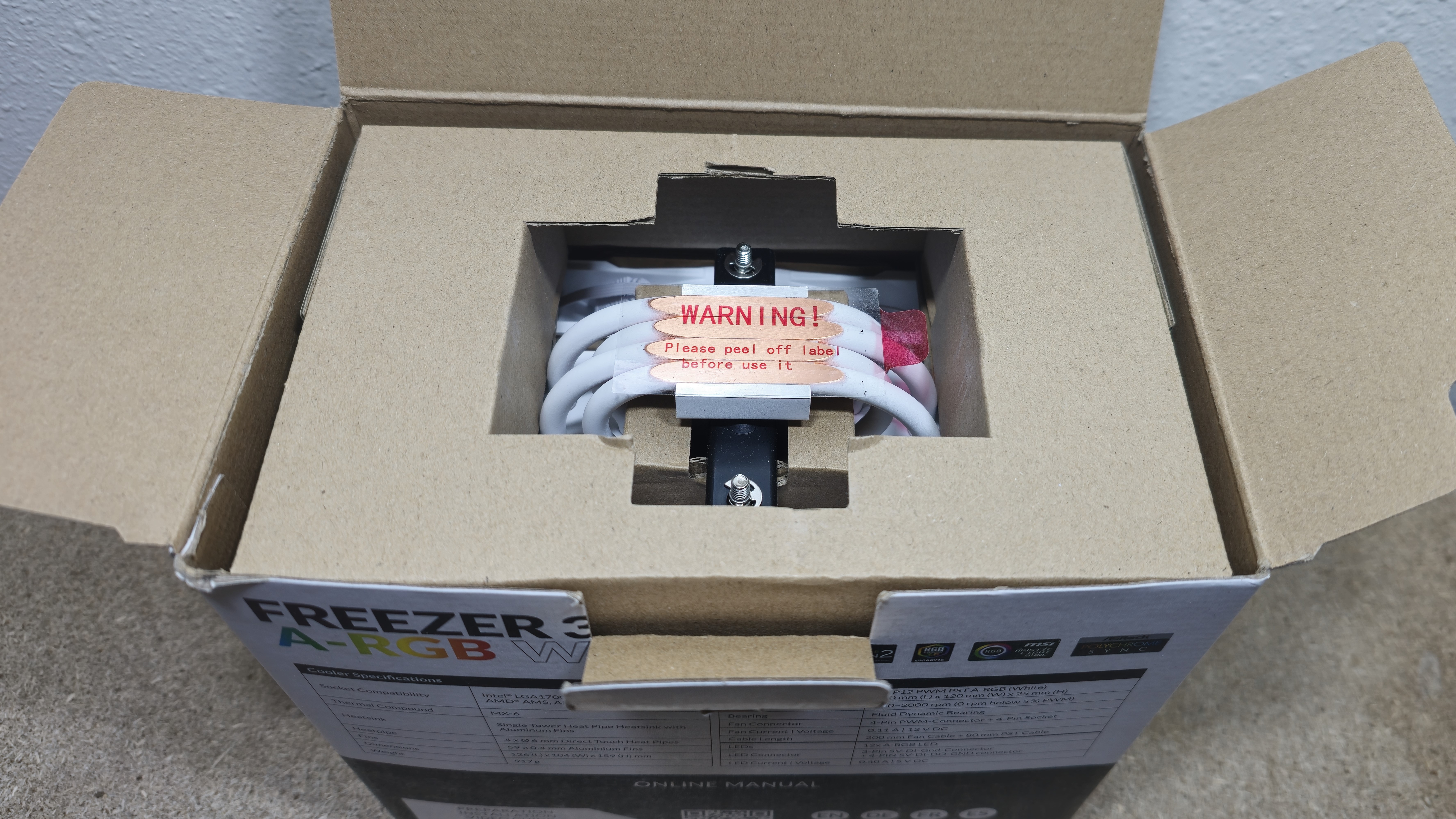

Included with the cooler are the following:
- Slim heatsink
- Two 120mm fans
- Mounting for modern AMD and Intel Platforms
- LGA 1700 contact frame
- Thermal Paste
- Complimentary sticker
LGA 1700 installation
The installation of the Freezer 36 is like none other on the market, as it requires use of a custom LGA 1700 contact frame. This could be considered a pro or a con, depending on how you look at it.
As a cooler reviewer, I use an LGA 1700 contact frame on my benchmarking system to ensure consistency in testing results. But while I personally use a contact frame to ensure consistency in thermal results, I don’t like making the use of a contact frame a requirement. Not only can this potentially void your motherboard’s warranty, but minor mistakes with the installation of one of these frames can introduce instability that most commonly manifests as memory errors.
It would have been easy for Arctic to make the cooler work on these systems without using their contact frame. They would just have to drill two holes into the existing mounting bars included with AMD systems and include a backplate. This would have the additional benefit of supporting not just LGA 1700, but older LGA 1200-based systems as well.
1. The first thing you’ll need to do is to remove the default CPU socket. You’ll need something to keep everything secure while doing this. I used another CPU cooler’s motherboard backplate, as the standoffs included grip it and kept everything in place.
2. Place the contact frame on top of the CPU, and secure it with the included screws.
3. Place the mounting bars on top of the standoffs and secure them with the included screws.
4. You’ll need to apply thermal paste to the CPU before proceeding further – and if you're unsure how to do that, see our How to Apply Thermal Paste primer.
5. Secure the contact plate against the CPU using a screwdriver.
6. Snap the fans into place by pressing them against the radiator, then connect the ARGB and PWM headers to your motherboard as needed.
7. Turn on your computer, and you’re good to go.
LGA1700 Socket Bending
There are many factors other than the CPU cooler that can influence your cooling performance, including the case you use and the fans installed in it. A system's motherboard can also influence this, especially if it suffers from bending, which results in poor cooler contact with the CPU.
Included with the Liquid Freezer III AIOs is a LGA 1700 contact frame which is mandatory for installation. With other coolers tested in this review, we’ve installed Thermalright’s LGA 1700 contact frame into our testing rig in order to prevent bending from impacting our cooling results.
If your motherboard is affected by bending, your thermal results will be worse than those shown below. Not all motherboards are affected equally by this issue. I tested Raptor Lake CPUs in two motherboards. And while one of them showed significant thermal improvements after installing Thermalright’s LGA1700 contact frame, the other motherboard showed no difference in temperatures whatsoever! Check out our review of the contact frame for more information.
Testing Methodology, and how my testing differs vs the competition
My last review of Arctic’s Liquid Freezer III AIOs was quite controversial, and it made me realize that I need to better explain my testing methodology.
My cooler testing is specifically designed to emulate the conditions a user would actually experience when using a computer. Some reviewers test coolers using an open bench. I do not like this method, it reduces cooling difficulty. When you use a case, the internal temperature of that case will become higher than that of the room’s ambient temperature, increasing the saturation of the cooler and overall cooling difficulty. Testing outside of a case will give an advantage to weaker coolers, especially those with fans that aren’t very strong.
Others test using a thermal heatplate. This method suffers from all the drawbacks of an open bench, but also doesn’t accurately represent cooling a CPU. A thermal plate evenly distributes a thermal load across the copper heat conduction square. The problem with this type of testing is that modern AMD Ryzen and Intel Core CPUs have most of their heat concentrated in a few hotspots – and cooling a concentrated source of heat is more difficult than cooling a source that’s spread evenly.
In discussions with industry representatives, one manufacturer (who wishes to remain anonymous) mentioned that in the past they once used heat plates in a thermal chamber during their design process, until they realized that method of testing was “giving us nice TDP numbers to print on the box, but is not reflective of the user experience at all.” They mentioned that switching to tests using real CPUs increased their testing time, but also provided valuable data to help improve their products. An example they provided is that this testing allowed them to properly observe “differences between AMD and Intel systems, which we can then address.”
The last thing I do differently from some cooler testers is that I insist on using relatively new CPUs for cooler testing because people building new PCs should be using recent CPUs. Also, thermal density is just different with newer CPUs. Products like Ryzen 3000 “Zen 2” and older 14nm Intel CPUs have lower heat density compared to modern counterparts, due to a combination of using older manufacturing processes and running at lower clock speeds. Using a weaker cooler with an older CPU can make the cooler look better performing than it actually is with current-gen silicon.
Today's highest-end CPUs, whether Intel or AMD, are difficult to cool in intensive workloads. In the past. reaching 95 degrees Celsius or more on a desktop CPU might have been a cause for concern. But with today’s top-end CPUs, this is considered normal operation. Similar behavior has been present in laptops for years due to cooling limitations in tight spaces.
All testing is performed with a 23C ambient room temperature. Multiple thermal tests are run on each CPU to test the cooler in a variety of conditions, and acoustic measurements are taken with each result. These tests include:
1. Noise normalized testing at low noise levels
2. “Out-of-the-box”/Default configuration thermal & acoustics testing
a. No power limits enforced
b. Because CPUs hit TJMax in this scenario, the best way to compare cooling strength is by recording the total CPU package power consumption.
3. Thermal & acoustics testing in power-limited scenarios
a. Power limited to 175W to emulate a medium-intensity workload
b. Power limited to 125W to emulate a low-intensity workload
The thermal results included are for 10-minute testing runs. To be sure that was sufficiently long to tax the cooler, we tested both Thermalright’s Assassin X 120 R SE and DeepCool’s LT720 with a 30-minute Cinebench test with Intel’s i9-13900K for both 10 minutes and 30 minutes. The results didn’t change much at all with the longer test: The average clock speeds maintained dropped by 29 MHz on DeepCool’s LT720 and 31 MHz on Thermalright’s Assassin X 120 R SE. That’s a tiny 0.6% difference in clock speeds maintained, a margin-of-error difference that tells us that the 10-minute tests are indeed long enough to properly test the coolers.
Testing configuration – Intel LGA1700 platform
MORE: How to Buy the Right CPU Cooler
MORE: How to Check CPU Temperature
MORE: All CPU Cooling Content

Albert Thomas is a contributor for Tom’s Hardware, primarily covering CPU cooling reviews.
-
dalauder The Vetroo U6PRO is also great in this price range. I'm not sure how the noise compares though.Reply -
Misiu Being priced equally or more expensive than Thermalright Phantom Spirit 120 it is a niche product for brand lovers. 6 Years warranty and MX-6 Thermal Paste are a great bonus. But if you can buy PS 120 or PS 120 EVO for the same money then it is no brainer. I used to have an Arctic Freezer 34 eSports Duo cooler which managed to cool 5800x with PBO at the time. It was a good bang for the buck back then. But the competition is different now. If you can buy Thermalright AssassinX120 R SE for 18Eur providing similar performance then you don't pay 38Eur for the Freezer 36.Reply


